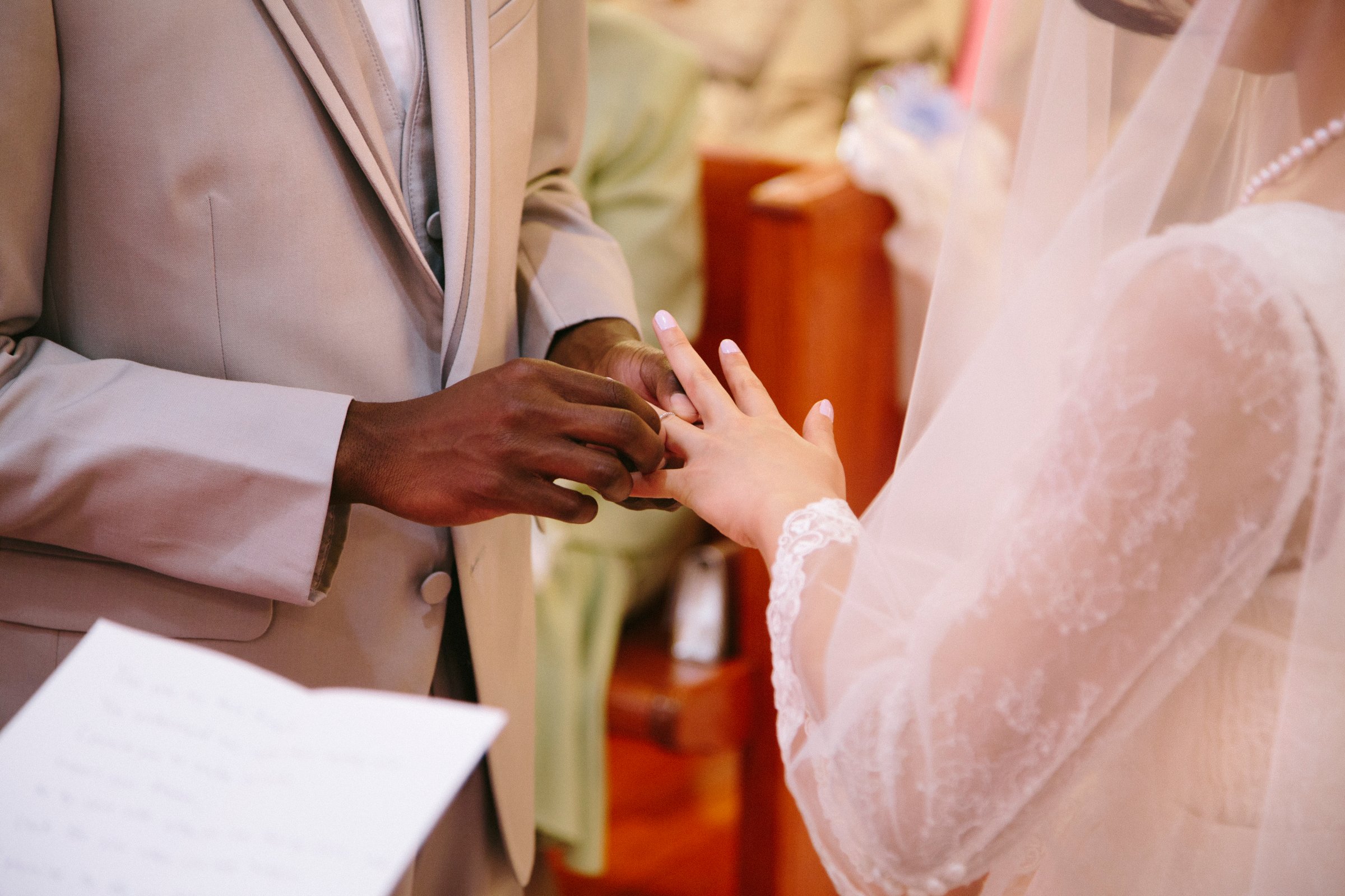
On June 12, 2017, it will have been 50 years since the U.S. Supreme Court decided that Americans should in fact be allowed to marry a partner of whatever race they want. Since then, many American couples have availed themselves of that right, although white people remain much less likely to marry another race than people of other races, according to a new report from Pew Research.
Five times as many people who married in 2015 chose partners from a different race or ethnicity as those who married in 1967. That’s 17% of all newlyweds — or one in six — that year. The largest increase was among African Americans; since 1980, the number of black spouses who intermarried has increased from 5% to 18%. And the number of whites who intermarried increased from 4% to 11% in the same period. (Pew defines “intermarriage” as between two different races as well as between a Hispanic and a non-Hispanic, even if they are of the same race.)
The newlyweds most likely to be intermarried are Asian or Hispanic. Almost 30% of Asians who married in 2015 wed someone of another race, and about 27% of Hispanics married a non-Hispanic, says Pew. But the rate of intermarriage has stopped growing among those groups; in 1980, for example, 33% of newlywed Asians were marrying non-Asians. The most common interracial match by far — 42% of all intermarriages— is that between a Hispanic person and a white person.
Gretchen Livingston, a senior researcher at Pew who authored the report, says whites have the lowest rates of intermarriage partly because of the number of potential partners who are white. “If you’re living in a place where 85% of the marriage market is white and you’re white there’s a low probability that you will marry someone who is not white,” she says. As shown in the map above, intermarriage occurs least in the places where the fewest minorities live.
But that same math does not seem to apply to Hispanics. “Clearly there’s something else going on,” says Livingston, “because if you look over time, the share of Hispanics in this country has risen a lot but frankly their rate of intermarriage has not really changed. It can’t just be about the availability of potential spouses who are Hispanic.”
Gender matters more in some races than others. In 2015, black grooms (24%) were twice as likely to have a partner of a different race or ethnicity as black brides (12%), a trend that hasn’t budged much in the past few years. Conversely Asian brides (36%) were much more likely to have walked down the aisle toward a partner of a different race than Asian grooms (21%) were to be waiting for one.
In yet another sign that marriage is a very different institution among the wealthy and the less well off, education changes how likely it is that newlyweds are intermarried. The more educated a partner is — no matter the race — the higher the likelihood that his or her new spouse is from a different race or ethnicity.
While the intermarriage numbers represent a considerable change, they are dwarfed by the adjustment in attitudes towards it. In 1990, almost two thirds of Americans who weren’t black said they would be opposed to a close friend or relative marrying someone who was. That figure is now at 14%, a dramatic drop. Disapproval dropped among all other races as well. “In just seven years, the share of adults saying that the growing number of people marrying someone of a different race is good for society has risen 15 points, to 39%,” says Pew, which commissioned a new survey in February to accompany the report. In 2014 the figure was 37%. African Americans are the outliers. Almost one in five thinks intermarriage is bad for society. But most people of any race said they didn’t think it made any difference.
Livingston says she would love to get her hands on some of that attitudinal data broken out by gender so she could begin to tease out the gender imbalance among different races. Do opinions about the marital choices of black women and Asian dudes differ from those of black men and Asian women? Is it somehow more frowned upon for them to marry across racial or ethnic lines? “I would love to have attitudinal breaks on race and gender to see if that would explain some of what’s going on,” she says. She’d also like to understand why African Americans are more likely to think that intermarriage is bad for society than other races. “That’s a really striking finding.”
More Must-Reads from TIME
- Why Trump’s Message Worked on Latino Men
- What Trump’s Win Could Mean for Housing
- The 100 Must-Read Books of 2024
- Sleep Doctors Share the 1 Tip That’s Changed Their Lives
- Column: Let’s Bring Back Romance
- What It’s Like to Have Long COVID As a Kid
- FX’s Say Nothing Is the Must-Watch Political Thriller of 2024
- Merle Bombardieri Is Helping People Make the Baby Decision
Contact us at letters@time.com